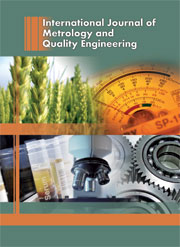Article contents
The role of measurement and modelling of machine tools inimproving product quality
Published online by Cambridge University Press: 06 March 2014
Abstract
Manufacturing of high-quality components and assemblies is clearly recognised byindustrialised nations as an important means of wealth generation. A “right first time”paradigm to producing finished components is the desirable goal to maximise economicbenefits and reduce environmental impact. Such an ambition is only achievable through anaccurate model of the machinery used to shape the finished article. In the first analysis,computer aided design (CAD) and computer aided manufacturing (CAM) can be used to producean instruction list of three-dimensional coordinates and intervening tool paths totranslate the intent of a design engineer into an unambiguous set of commands for amanufacturing machine. However, in order for the resultant manufacturing program toproduce the desired output within the specified tolerance, the model of the machine has tobe sufficiently accurate. In this paper, the spatial and temporal sources of error andvarious contemporary means of modelling are discussed. Limitations and assumptions in themodels are highlighted and an estimate of their impact is made. Measurement of machinetools plays a vital role in establishing the accuracy of a particular machine andcalibrating its unique model, but is an often misunderstood and misapplied discipline.Typically, the individual errors of the machine will be quantified at a given moment intime, but without sufficient consideration either for the uncertainty of individualmeasurements or a full appreciation of the complex interaction between each independentlymeasured error. This paper draws on the concept of a “conformance zone”, as specified inthe ISO 230:1 – 2012, to emphasise the need for a fuller understanding of the complexuncertainty of measurement model for a machine tool. Work towards closing the gap in thisunderstanding is described and limitations are noted.
Keywords
Information
- Type
- Research Article
- Information
- International Journal of Metrology and Quality Engineering , Volume 4 , Issue 3 , 2013 , pp. 177 - 184
- Copyright
- © EDP Sciences 2014
References
- 6
- Cited by

